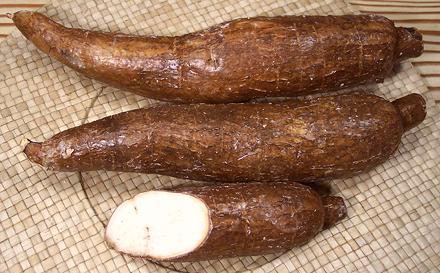 [Manioc; Yuca (Hispanic); Balinghoy, Kamoteng kahoy (Philippine);
Mogo (Africa); Mandioca, Tapioca-root (India); Manihot esculenta]
[Manioc; Yuca (Hispanic); Balinghoy, Kamoteng kahoy (Philippine);
Mogo (Africa); Mandioca, Tapioca-root (India); Manihot esculenta]
Cassava / Manioc is native to South America, but is now a critically important food crop through the tropical and subtropical regions of the world. Nigeria is now the largest producer, and Thailand is the largest exporter of dried Cassava products. Roots are rated "sweet" (not bitter) if they have a low cyanide content and "bitter" if they have a high cyanide content. Bitter Cassava requires special processing before consumption, but the FDA doesn't allow that variety to be sold in the United States. The largest of the photo specimen was 11-1/2 inches long, 2-1/4 inches diameter and weighed just over 1 pound.
Cassava root should not be eaten raw, but is peeled, chunked and
boiled to make it edible. It is then drained and used as chunks or
mashed, similarly to potatoes. South American natives use cassava to
make a mildly alcoholic beverage, cauim, with fermentation started by
spitting into the vat, the same method once used to produce sake in
Japan.
 This was a basic travel food of West
Africa, but is now used for many other occasions. The granules can even
be eaten dry, but better, simply mix with an equal amount of cold water
and a little salt. After sitting for 20 minutes or so, it makes a fine
accompaniment for spicy stews and the like, with an interesting, slightly
sour flavor. It is also used in a great number of other ways, both as
a featured ingredient or sprinkled on food as a simple condiment.
This was a basic travel food of West
Africa, but is now used for many other occasions. The granules can even
be eaten dry, but better, simply mix with an equal amount of cold water
and a little salt. After sitting for 20 minutes or so, it makes a fine
accompaniment for spicy stews and the like, with an interesting, slightly
sour flavor. It is also used in a great number of other ways, both as
a featured ingredient or sprinkled on food as a simple condiment.
Gari is made by peeling and grating or mashing cassava tubers, then
fermenting the mash for 5 days to remove the cyanide. It is then put in
porous bags and pressed in a screw or hydraulic press to remove as much
liquid as possible. After this it is sifted to remove fibers and reduced
to the desired particle size. Next it is roasted over a wood fire in a
large iron pan for 20 to 30 minutes, after which it is cooled and
sieved. Particles that don't pass the sieve can be sold as a lesser
grade. Some Gari is processed with Palm or Peanut oil at one or more
stages of its production.
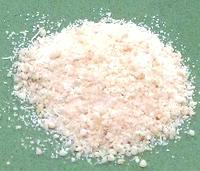 This is the Gari of Brazil, and is manufactured by a similar fermenting
and granulating process. The most important use is to make the extremely
popular side / breakfast dish Farofa, where it is roasted with other
ingredients, particularly butter. For an example, see our recipe
Farofa.
This is the Gari of Brazil, and is manufactured by a similar fermenting
and granulating process. The most important use is to make the extremely
popular side / breakfast dish Farofa, where it is roasted with other
ingredients, particularly butter. For an example, see our recipe
Farofa.
This product comes in two versions, "Cruda" (raw) or Torrada (roasted).
The Torrada has a somewhat nutty flavor. The Cruda is often toasted before
use. African Gari is easier to find in North America, and pretty much
identical to the Cruda.
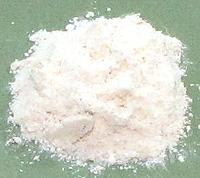
Caution: This product is not the same as Tapioca Flour. It is dried and ground whole Manioc roots, not just the starch extracted from them. It has become very popular in North America because it is as close to wheat flour as you can get and still be gluten free. It is also nut-free, vegetarian, vegan and grain free, so is acceptable to people on the Paleo Diet. Of course, real Paleo humans gathered and ate grains any time they were in season.
This product is produced similarly to Gari, but it is not fermented.
Also, rather than being roasted, it is sun dried, then ground extremely
fine in a pin mill. This processing reduces cyanide content without
fermenting.
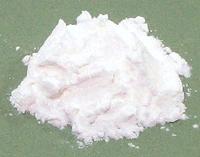
Caution: This product is not the same as Cassava Flour. Tapioca flour is used as a common thickener worldwide, and in the form of tapioca pearls to make puddings and deserts. Tapioca is used to make the jelly balls in the boba drinks popular in East and Southeast Asia and with children in North America.
Production of Tapioca is more complex than Cassava Flour, because
there is an extraction step to separate the starch from the other
components of the flour. It may be formed into granules, or into beads
of various sizes.
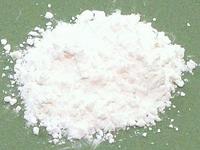
This product is made from Tapioca flour by Fermenting and Sun Drying
(only natural Sun Drying works). This process gives the Tapioca Starch
some unique properties. In baking, it expands without yeast, baking soda
or other leavening agents. It is used in many specialty baking
applications, including gluten free breads and pastries. Most of this
flour is made in Brazil.
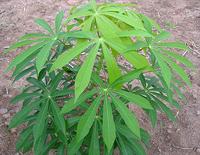 Cassava Leaves are edible, after being properly cooked to rid them of
Cyanide. Cooking time should be at least 10 minutes, with the cooking
water discarded. The leaves are particularly high in protein for a
leafy green (3.7%), which is much more than the roots. It is high
quality protein similar to eggs and soybeans, containing lysine,
isoleucine, leucine, valine, and arginine, not common in green leafy
plants.
Cassava Leaves are edible, after being properly cooked to rid them of
Cyanide. Cooking time should be at least 10 minutes, with the cooking
water discarded. The leaves are particularly high in protein for a
leafy green (3.7%), which is much more than the roots. It is high
quality protein similar to eggs and soybeans, containing lysine,
isoleucine, leucine, valine, and arginine, not common in green leafy
plants.
Flavor of the leaves is not strong, but taste like a mix of spinach
and peas. They are usually used in fairly strongly flavored soups
and stews. Cassava Leaves are a major source of nutrition in Indonesia.
Dried powdered Cassava leaves are sometimes available from markets
dealing with African ingredients. Dried and Frozen Cassava Leaves are
often available in Philippine markets here in Southern California.
Photo by Kenic distributed under license
Creative Commons
Attribution v3.0 Unported.